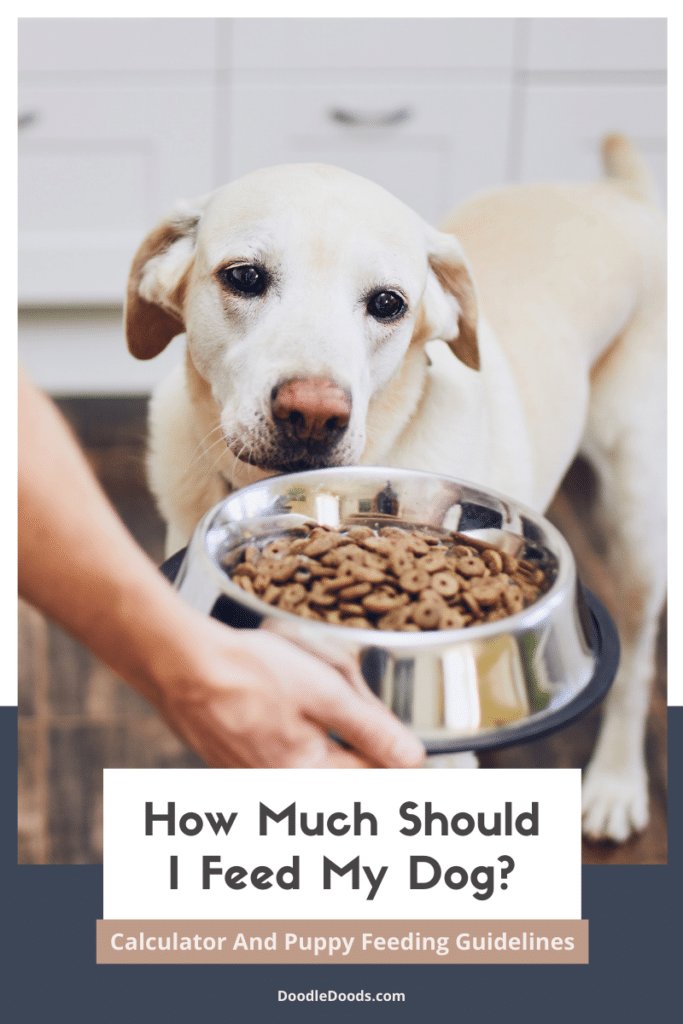Dog food feeding guidelines can provide a useful starting point, but they may not be entirely accurate for every dog. Factors like age, weight, activity level, and health should also influence feeding decisions.
Choosing the right dog food is crucial for your pet's health. Many brands offer feeding guidelines based on general weight categories. While these guidelines serve as a helpful baseline, they often lack personalization. Dogs vary widely in size, breed, and metabolism, which means one size does not fit all.
It’s essential to monitor your dog’s body condition and adjust portions accordingly. Consulting with a veterinarian can help ensure your dog receives the correct nutrition tailored to its specific needs. Understanding these nuances helps promote a healthier, happier pet.
Table of Contents
ToggleIntroduction To Canine Nutrition
Understanding canine nutrition is vital for your dog's health. Proper nutrition affects energy levels, coat quality, and overall well-being. Dogs need a balanced diet to thrive. Feeding guidelines can help, but they may not always be accurate.
Essential Nutrients For Dogs
Dogs require several essential nutrients for optimal health. These include:
- Proteins: Build and repair body tissues.
- Fats: Provide energy and support cell growth.
- Carbohydrates: Supply energy and promote digestive health.
- Vitamins: Support various bodily functions and immune health.
- Minerals: Aid in bone health and metabolic processes.
Each nutrient plays a specific role in your dog's health. A balanced mix is essential for growth and development.
Variability In Dog Diets
Each dog is unique. Their dietary needs can vary based on:
- Age: Puppies, adults, and seniors have different nutritional needs.
- Breed: Some breeds require more specific diets than others.
- Health Status: Dogs with health issues may need special food.
- Activity Level: Active dogs may need more calories.
This variability means feeding guidelines may not fit every dog. Always consult a veterinarian for personalized advice.

Credit: doodledoods.com
Exploring Dog Food Feeding Guidelines
Dog food feeding guidelines help pet owners choose the right amount of food. These guidelines can be found on the packaging of dog food. Understanding them is crucial for your dog's health. Let's dive deeper into how these guidelines came about and how to interpret them.
Origins Of Feeding Recommendations
Feeding recommendations for dogs have evolved over time. Early advice was often based on anecdotal evidence. Today, experts use scientific research to create these guidelines. Key organizations involved include:
- Association of American Feed Control Officials (AAFCO)
- National Research Council (NRC)
- Veterinary nutritionists
These organizations consider factors like:
- Dog's age
- Weight
- Activity level
- Health conditions
Feeding guidelines aim to meet a dog's nutritional needs. They suggest daily food amounts based on weight. This helps maintain a healthy weight and overall well-being.
Interpreting The Labels
Dog food labels provide vital information. They include feeding guidelines based on your dog's weight. For example:
| Dog Weight (lbs) | Recommended Daily Amount (cups) |
|---|---|
| 10 | 1/2 – 1 |
| 20 | 1 – 1 1/2 |
| 50 | 2 – 3 |
| 100 | 3 – 4 1/2 |
Always check the serving size. This helps prevent overfeeding or underfeeding. Each dog is unique. Factors like breed and metabolism affect their needs.
Reading labels can be tricky. Look for terms like “complete” and “balanced.” These indicate the food meets AAFCO standards. Always consult your vet for specific advice.
Factors Affecting A Dog's Dietary Needs
Understanding what influences a dog's dietary needs is crucial. Several factors play a role in determining the right amount and type of food for your furry friend. Here, we explore key aspects such as age, activity level, and breed-specific requirements.
Age And Life Stage
A dog's nutritional needs change as it ages. Puppies, adult dogs, and seniors require different diets.
- Puppies: Need high-protein food for growth.
- Adults: Require balanced nutrition for maintenance.
- Seniors: Benefit from lower calories and joint support.
Feeding guidelines often reflect these life stages. Consult your vet for specific recommendations based on your dog's age.
Activity Level And Metabolism
A dog's activity level directly impacts its dietary needs. Active dogs need more calories than couch potatoes.
| Activity Level | Caloric Needs |
|---|---|
| Low (sedentary) | Less than 20 calories per pound |
| Moderate | 20 to 30 calories per pound |
| High (active) | 30 to 40 calories per pound |
Metabolism also varies among dogs. Some dogs burn calories faster. Adjust food accordingly for weight management.
Breed-specific Nutritional Requirements
Different breeds have unique nutritional needs. Large breeds and small breeds cannot eat the same food.
- Large Breeds: Require lower fat to prevent obesity.
- Small Breeds: Need higher energy in smaller portions.
- Working Breeds: Benefit from protein-rich diets for stamina.
Choosing breed-specific food helps meet your dog's needs. Always check labels for appropriate nutrients.

Credit: www.thornappleveterinarymedicalcenter.com
Discrepancies In Feeding Instructions
Feeding guidelines for dog food often create confusion. Different brands provide various instructions. This inconsistency can lead to incorrect feeding amounts.
Portion Size Disputes
Many dog food labels suggest specific portion sizes. Yet, these recommendations can vary widely. Factors such as dog breed, age, and activity level impact actual needs. Here’s a brief overview:
| Dog Breed | Suggested Portion Size (cups per day) |
|---|---|
| Small Breeds (e.g., Chihuahua) | 1/4 to 1 |
| Medium Breeds (e.g., Beagle) | 1 to 2 |
| Large Breeds (e.g., Labrador) | 2 to 4 |
Many pet owners face challenges. Dogs may gain weight or become underweight. Observing your dog’s body condition is crucial. Adjust portions based on their appearance and activity.
One-size-fits-all Approach Issues
Feeding guidelines often adopt a one-size-fits-all model. This approach fails to consider individual needs. Dogs have unique characteristics that influence their diets.
- Age: Puppies need more calories than adults.
- Activity Level: Active dogs require more food than sedentary ones.
- Health Conditions: Dogs with certain health issues may need special diets.
Using generic feeding guidelines can lead to health problems. Always consult with a veterinarian. They can provide tailored advice for your dog’s specific needs.
The Role Of Pet Food Manufacturers
Pet food manufacturers play a crucial role in shaping our dog's diet. They create feeding guidelines based on research and marketing. Understanding their influence helps pet owners make better choices.
Marketing Versus Nutrition
Pet food companies focus on marketing their products. They want to attract customers. This can create confusion about what is truly nutritious for dogs.
- Bold Claims: Many brands advertise premium ingredients.
- Catchy Labels: Words like “natural” or “holistic” attract buyers.
- Targeted Promotions: Specific diets for certain breeds or ages.
These marketing strategies may not reflect actual nutritional value. Pet owners need to look beyond the packaging.
Regulatory Oversight And Labeling
Regulations guide pet food manufacturing. Agencies like the Association of American Feed Control Officials (AAFCO) set standards.
| Labeling Requirement | Description |
|---|---|
| Guaranteed Analysis | Shows nutrient percentages in the food. |
| Ingredient List | Lists all ingredients in order by weight. |
| Feeding Guidelines | Offers suggested amounts based on weight. |
While regulations exist, not all manufacturers follow them closely. Some may exaggerate benefits. Reading labels carefully is essential for pet owners.
Veterinary Insights On Feeding Guidelines
Veterinarians play a crucial role in understanding dog nutrition. Their insights help pet owners navigate the complex world of dog food. Many guidelines exist, but are they accurate? Let’s explore this topic.
Professional Opinions
Veterinarians often have varied views on feeding guidelines. Some key points include:
- Standardized Guidelines: Many brands provide general feeding charts.
- Individual Needs: Every dog is unique, needing tailored nutrition.
- Age and Weight: Feeding amounts vary based on age and weight.
Veterinary opinions emphasize that these guidelines are starting points. They do not replace personal assessments. Regular check-ups ensure dogs receive the right nutrients.
Customized Diet Plans
Creating a customized diet plan is essential for your dog’s health. Consider the following factors:
- Breed: Different breeds have distinct nutritional requirements.
- Activity Level: Active dogs need more calories.
- Health Conditions: Some dogs require special diets for health issues.
Veterinarians can design tailored meal plans. These plans ensure dogs get optimal nutrition. Regular adjustments may be necessary based on your dog’s response.
| Factor | Description |
|---|---|
| Age | Puppies, adults, and seniors have different needs. |
| Weight | Overweight dogs need less food than active ones. |
| Health | Allergies or diseases may require special diets. |
Understanding these factors leads to better feeding decisions. Consult your vet for the best approach.
Case Studies And Research Findings
Understanding dog food feeding guidelines requires examining real-life examples and scientific studies. These findings help pet owners make informed choices for their furry friends. Let's dive into specific case studies and research that highlight the accuracy of these guidelines.
Real-life Examples
Many pet owners share experiences about dog food feeding guidelines. Here are some notable cases:
- Case 1: Bella the Beagle – Bella was fed according to the package guidelines. She gained weight quickly. A vet adjusted her portions, leading to a healthier weight.
- Case 2: Max the Labrador – Max's owner researched his breed. They learned Labs need a high-protein diet. By switching foods, Max became more energetic and playful.
- Case 3: Daisy the Dachshund – Daisy had digestive issues. Her owner consulted a vet. They found that the feeding guidelines were too rich for her. Switching to a lighter diet improved her health.
Scientific Studies On Dog Nutrition
Research plays a crucial role in understanding dog nutrition. Here are some significant studies:
| Study Title | Findings | Implications |
|---|---|---|
| Canine Nutritional Needs | Dogs require balanced diets with proteins, fats, and carbs. | Guidelines should reflect these essential nutrients. |
| Impact of Overfeeding | Overfeeding leads to obesity and health issues. | Feeding guidelines must emphasize portion control. |
| Diet and Behavior | Diet affects dog behavior and energy levels. | Guidelines should consider nutritional impact on behavior. |
These studies demonstrate the importance of tailored feeding guidelines. Accurate information helps pet owners provide the best care for their dogs.
Owner Experiences And Observations
Dog owners often share their insights about feeding guidelines. Their experiences shape perceptions about the accuracy of these guidelines. Many factors influence how much and what to feed dogs. Individual dog needs vary widely. Here’s a look at what dog owners say.
Feedback From Dog Owners
Dog owners provide valuable feedback about feeding guidelines. Here are some common themes:
- Weight Management: Many owners adjust portions based on their dog's weight.
- Activity Level: Active dogs often require more food.
- Age Considerations: Puppies need different nutrition than senior dogs.
- Health Issues: Dogs with health problems may need special diets.
Some owners report noticeable changes when altering food amounts. Others find recommended amounts lead to weight gain. This feedback highlights the need for personalized feeding plans.
Community Forums And Social Media Trends
Online communities and social media offer insight into dog feeding practices. Owners discuss their experiences openly. Here are some key points from these platforms:
| Platform | Common Discussions |
|---|---|
| Facebook Groups | Feeding tips, ingredient debates, brand recommendations |
| Personal feeding stories, guideline critiques, health impacts | |
| Pet meal photos, DIY recipes, diet success stories |
Trends in these discussions reveal that many owners question standard guidelines. They often seek advice tailored to their dog's needs.
Community support helps owners make informed feeding choices. Shared experiences enrich understanding of dog nutrition.
Improving Feeding Practices
Dog food feeding guidelines can often be misleading. Pet owners need accurate information for their dog's health. Improving feeding practices is essential for every pet owner.
Educating Pet Owners
Pet owners play a crucial role in their dog's nutrition. Education helps them understand proper feeding methods. Here are some key points to consider:
- Know the dog's age, size, and breed.
- Read the ingredient list on dog food labels.
- Follow serving sizes based on weight.
- Monitor your dog's weight regularly.
- Consult a veterinarian for personalized advice.
Workshops and online resources can help owners learn more. Sharing knowledge within communities can also improve practices. Social media groups provide a platform for discussions and tips.
Advancements In Pet Nutrition
Pet nutrition has evolved significantly. New research offers better insights into dog health. Here are some advancements to note:
| Advancement | Description |
|---|---|
| Customized Diets | Tailored food based on individual dog needs. |
| Natural Ingredients | Focus on real food sources over fillers. |
| Probiotics | Supports digestive health and immune function. |
| Ingredient Transparency | Clear labeling allows informed choices. |
These advancements lead to healthier pets. Stay updated on nutrition trends. Research can help pet owners make better choices.

Credit: www.amazon.com
Conclusion: Toward Better Feeding Decisions
Understanding dog food feeding guidelines is vital for your pet's health. These guidelines provide a helpful starting point. Yet, they may not suit every dog. Customized feeding decisions lead to better health outcomes.
Balancing Guidelines With Individual Needs
Each dog is unique. Factors like age, weight, and activity level influence their dietary needs. Follow these tips for better feeding decisions:
- Age: Puppies need more nutrients than adult dogs.
- Weight: Overweight dogs require fewer calories.
- Activity Level: Active dogs need more calories.
- Health Conditions: Specific diets may be necessary for certain health issues.
Monitor your dog's weight and health regularly. Adjust their food intake based on changes. Consult your veterinarian for personalized advice.
The Importance Of Ongoing Research
Dog nutrition is always evolving. New studies provide fresh insights into dietary needs. Ongoing research helps improve feeding guidelines.
Stay updated on the latest findings. Here are some areas of focus:
- Quality of ingredients
- Impact of diets on health
- Long-term effects of feeding practices
Support organizations that conduct research on dog nutrition. This knowledge benefits all dog owners. Better information leads to better feeding decisions.
Frequently Asked Questions
Are Dog Food Feeding Guidelines Reliable?
Dog food feeding guidelines are often based on general recommendations. However, they may not consider each dog’s unique needs. Factors like age, weight, activity level, and health conditions vary. Always consult your veterinarian for personalized feeding advice tailored to your dog's specific requirements.
How Do I Determine My Dog's Ideal Food Amount?
To determine the ideal food amount for your dog, consider their weight and activity level. Most dog food packages provide feeding guidelines based on these factors. Adjust portions according to your dog's individual needs and monitor their weight regularly. Consult your vet for further adjustments if necessary.
What Factors Influence Dog Food Feeding Guidelines?
Several factors influence dog food feeding guidelines, including age, weight, and activity level. Additionally, breed and health conditions play crucial roles in determining proper portions. Always consider these elements when feeding your dog. Personalized advice from a veterinarian can help ensure your dog receives the right nutrition.
Can I Trust Dog Food Brands' Feeding Instructions?
While many dog food brands provide feeding instructions, these are often generalized. Each dog has unique needs that may not align with these guidelines. It's best to use them as a starting point. Regularly evaluate your dog's condition and consult your vet for tailored recommendations.
Conclusion
Understanding dog food feeding guidelines is crucial for your pet's health. These guidelines can vary widely among brands. Always consider your dog's unique needs, including age, weight, and activity level. Regularly consulting with a veterinarian ensures your furry friend receives the right nutrition.
Prioritize their well-being for a happy, healthy life.














